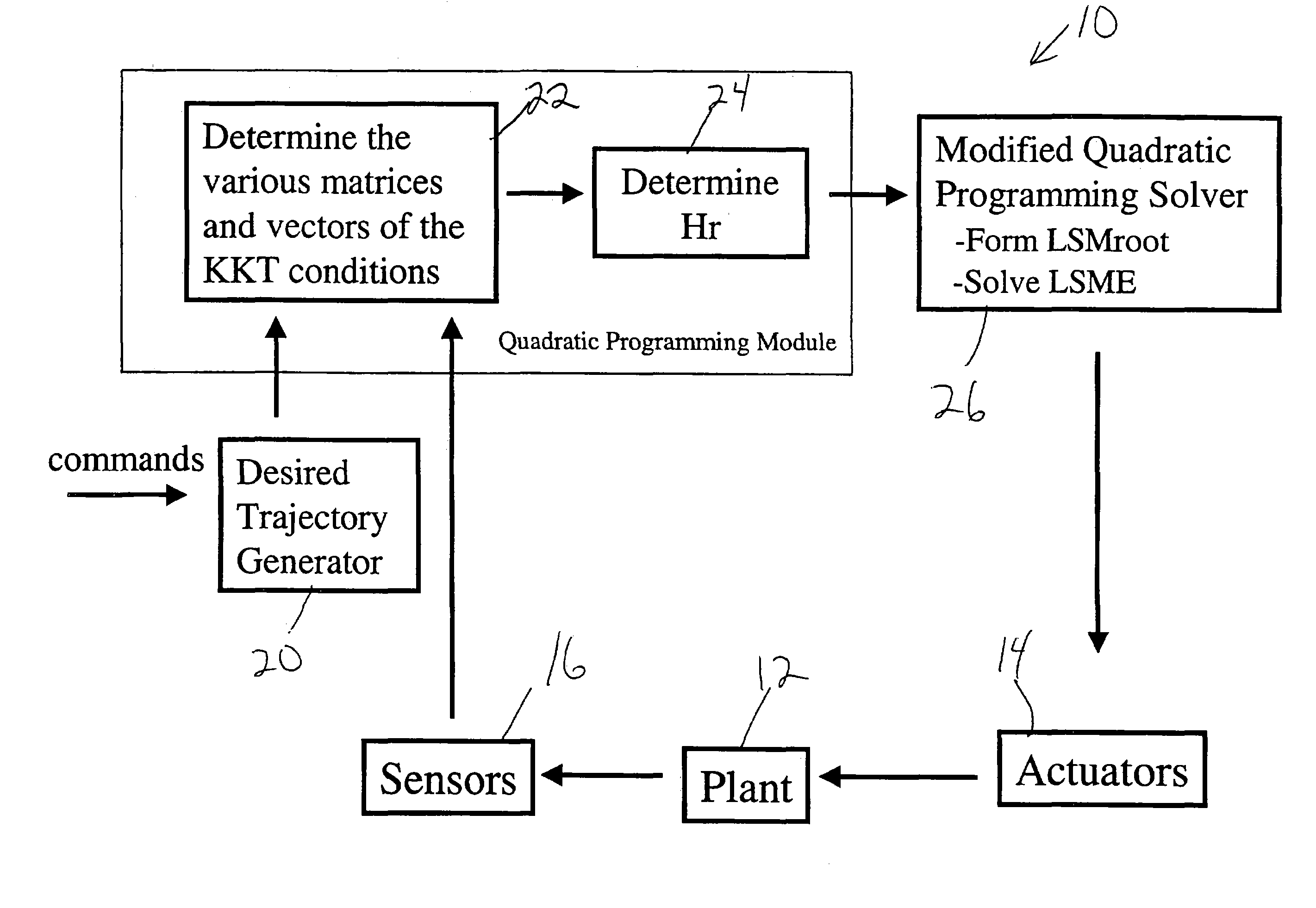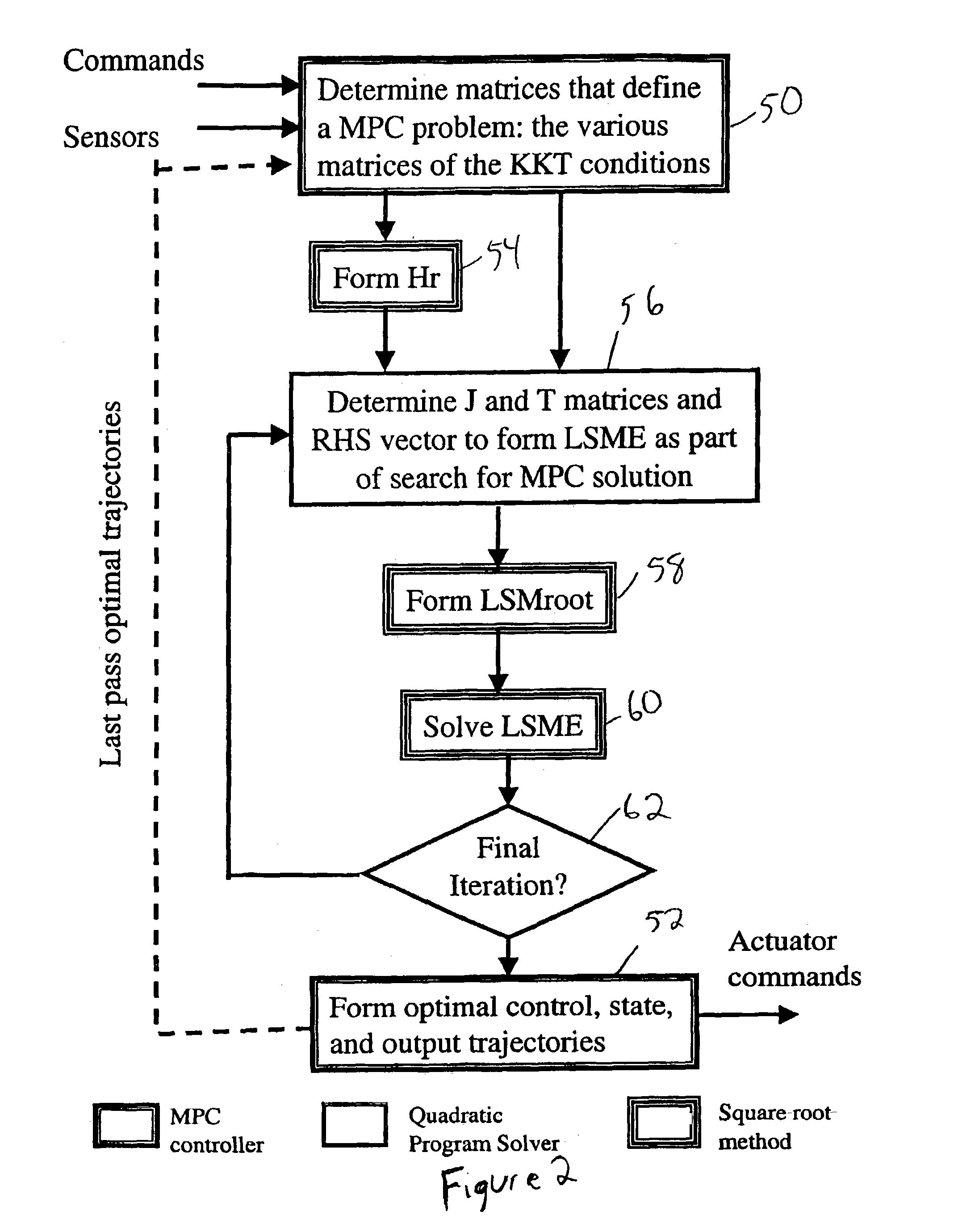Square root method for computationally efficient model predictive control
a model and predictive control technology, applied in the field of control systems, can solve the problems of significant mismatch between theory and practice, real and practical systems have substantial and significant limits, and control software is difficult to design, so as to reduce the computational burden of model predictive control, reduce computational burden, and accelerate the effect of dynamics
- Summary
- Abstract
- Description
- Claims
- Application Information
AI Technical Summary
Benefits of technology
Problems solved by technology
Method used
Image
Examples
Embodiment Construction
[0045]The algorithm of the present invention provides a square root method for factoring the Large Sparse Matrix Equation. Solving matrix equations such as the LSME involves first factoring the matrix into the product of an upper triangular matrix, one or more diagonal matrices, and a lower triangular matrix (or vice versa) and then solving easier matrix equations, two of which involve triangular matrices and the rest diagonal matrices. For the expected MPC problem sizes, the factorization is one to two orders of magnitude more complex than the solution of the diagonal and both triangular matrix equations combined. This invention is an algorithm for performing this factorization much faster.
[0046]At the highest level of description, this algorithm achieves great numerical efficiency by:
[0047]1. Ordering the equations and variables to get a symmetric, banded LSME.
[0048]2. Realizing this LSME needs to be solved many times each controller update
[0049]3. Realizing that because the LSME ...
PUM
 Login to View More
Login to View More Abstract
Description
Claims
Application Information
 Login to View More
Login to View More - R&D
- Intellectual Property
- Life Sciences
- Materials
- Tech Scout
- Unparalleled Data Quality
- Higher Quality Content
- 60% Fewer Hallucinations
Browse by: Latest US Patents, China's latest patents, Technical Efficacy Thesaurus, Application Domain, Technology Topic, Popular Technical Reports.
© 2025 PatSnap. All rights reserved.Legal|Privacy policy|Modern Slavery Act Transparency Statement|Sitemap|About US| Contact US: help@patsnap.com



